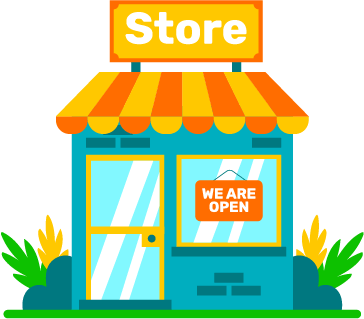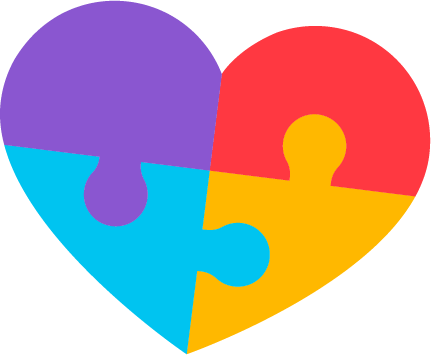Building Autism-Friendly Communities
in Malaysia
Introduction
Autism is not just a childhood condition; it is lifelong.
Autistic individuals experience and engage with the world in unique ways. Simple activities like grocery shopping or eating out can be incredibly challenging due to sensory issues and stigma, leading to increased isolation.
Autistic individuals face various challenges throughout their lives, ranging from severe to minimal, sometimes hidden or not immediately obvious. Despite these difficulties, they possess many strengths. Inclusion means inviting them to use their strengths to make real contributions to society.
Self-advocacy, where autistic individuals help shape policies, is crucial. An autism-friendly community supports this by listening to autistic people, their families, and allies. By doing so, we can create policies that improve their quality of life and ensure they have full access to society.
Understanding autism is important for helping both children and adults. By creating an autism-friendly community, we can make a big difference. It supports self-advocacy, leads to better policies, and makes our society more inclusive and welcoming for everyone

See our article on Self-Advocacy Skills in Autistic Children for why self-advocacy is an important life skill and how you can help your autistic child develop them.
What are Autism-Friendly Communities?
An inclusive community is designed to be livable for everyone, incorporating principles that benefit people of all ages and abilities. Research shows that concepts from dementia-friendly design can be adapted to help people with different needs, including those with autism.
The principles of an AFCo can be applied anywhere—from workplaces to individual business premises, and from neighbourhoods to cities.
Characteristics of an Autism-Friendly Community
- Welcoming and valuing everyone: Everyone is welcomed and valued, promoting understanding and respect.
- Friendship and community engagement: It offers opportunities for friendship and encourages community involvement.
- Accessible environments: Ensures environments are accessible and accommodating.
Creating a truly autism-friendly community involves more than just a welcoming attitude. It requires specific actions to provide the necessary support and remove barriers. Here are the key elements of support:
- Tailored supports and resources: Providing customised support and resources is crucial. This includes allowing individuals to make their own choices, empowering them with autonomy.
- Eliminating barriers: Focus on removing obstacles such as invisibility, bias, bullying, and lack of resources.
- Access to meaningful work: Address the lack of meaningful work opportunities and financial disadvantages for autistic individuals, as these are significant barriers to independent living
Autism-friendly businesses aim to be inclusive by offering flexible ways for individuals to interact with the environment. They maintain sensory-friendly settings and engage in meaningful, respectful interactions.
These businesses provide user control of the environment whenever practical, clear visual instructions, and supportive, non-intrusive service delivery

How to Create an Autism-Friendly Community
Every autistic individual is unique and may find some things difficult and others not. However, many people with autism often report similar challenges when they are out in the community.
While it may not be possible to make all of these changes, even small, low-cost, or no-cost adjustments can make a big difference between a successful outing and a distressing one for a person on the autism spectrum and their families.
Creating an autism-friendly community involves several steps:
- Training Staff: Educate staff to understand autism and strategies to support autistic individuals and their families.
- Infrastructure Changes: Modify environments to be more sensory-friendly.
- Awareness Campaigns: Run campaigns to raise awareness and understanding of autism.
By implementing these measures, an autism-friendly community ensures that every individual feels included, respected, and supported, creating a more inclusive and welcoming society for all.
For more specific examples and details on SERVICE, please see the Autism Friendly Communities – Corrimal website. The Autism Society of Greater Wisconsin has also produced a helpful infosheet with tips on sensory and general considerations for creating autism-friendly communities. You can access the infosheet here.
What is SERVICE?

- Ensure the right kind and level of sensory stimulation.
- Volume should be audible but not overwhelming.
- Use low odour products and perfume-free environments whenever possible.

- Use furnishings and fittings that absorb sound, are accessible or clearly limit access, and help create clear, organised spaces

-
Greet with a smile.
-
Offer support.
-
Give appropriate time for responses.
-
Always speak directly to the person you need to communicate with.
-
Never assume that someone can’t understand you

-
Keep space clutter-free
-
Use clear signages with pictures and place markers wherever possible.
-
Natural or solid colours with matte finishes are best.

- Ensure that whatever you have in the space and the things you say are necessary and serve a purpose.
- Is the language used clear and concise?
- Is it necessary to put many items around the counter or have posters near important signage?

- Create spaces that are easy to navigate
- Provide visual cues to the function of each space.
- Use furniture or colour to indicate movement through the space.
- Have low stimulation options using dividers, seat placement, mirrorless/reflective views, or low volume/no echo spaces

- The overall environment should be neutral.
- Natural ventilation, low decibel fans, natural or incandescent light wherever possible.
Benefits to Businesses and the Wider Community
On a social level, promoting understanding and acceptance of autism leads to a more supportive community. Families affected by autism feel less isolated and more involved in community life, making the community richer and more connected. These changes create a diverse and vibrant community where everyone feels valued and included.
Where Are These Communities Found?
Examples of autism-friendly public spaces in Malaysia (not a complete list)
Global examples of autism-friendly communities (not a complete list)

LemmeLearn a Penang-based organisation, provides inclusive vocational training for individuals with autism, focusing on equipping them with skills for minimal support and independence.
The organisation is working towards making a 1km radius around their Pulau Tikus centre an autism-friendly township.
Pulau Tikus is a self-contained township with essential facilities like a police station, banks, clinics, and a market.
Inclusion is not about the persons with a disability fitting into society & societal targets but about the system adapting to include her/him. It is the systems that are disabling, not the person
Dato’ Dr Amar-Singh HSS
APEC 2020
All of life is about Diversity. Sadly many of us get excluded due to our differences – Age, Gender, Ethnicity, Religion, Physical Appearance, Social Status, Disability, Country of Origin, etc.
If we want inclusion in disability, if we want an inclusive society, we need to advocate for & promote inclusion in every area.
Dato’ Dr Amar-Singh HSS
Embracing Autism: Creating Inclusive Communities 2024

